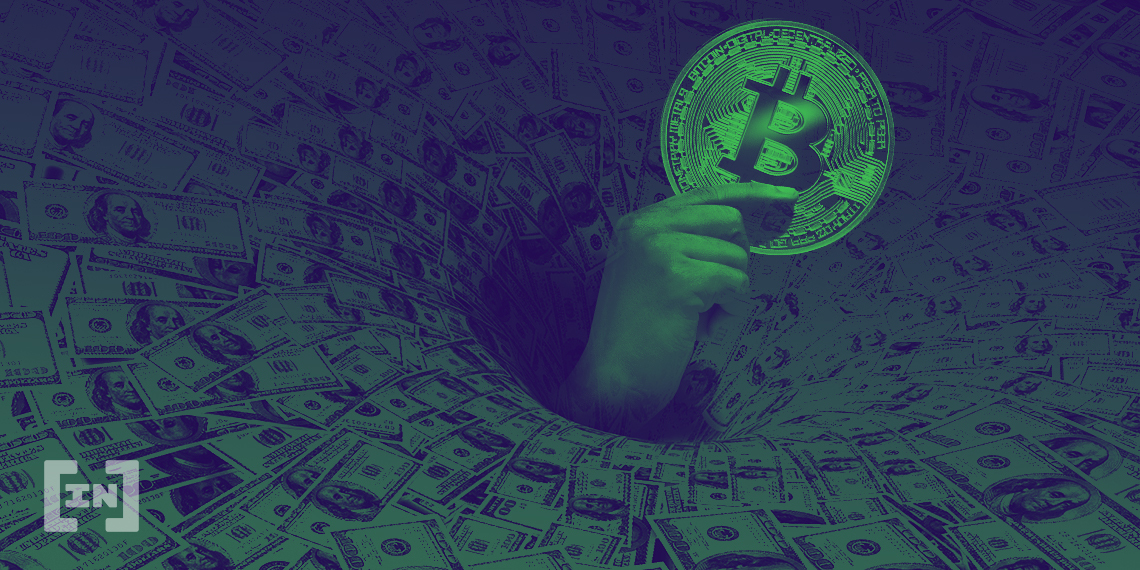2021-12-20 01:00 |
A thought experiment on the value of bitcoin if the Federal Reserve began stacking when bitcoin was created.
If you have fallen far enough down the rabbit hole, you know that bitcoin's supply schedule currently rewards 6.25 new bitcoin every 10 minutes, on average, to miners as a reward for successfully finding a valid nonce and committing a new block of transactions to the blockchain. This distribution schedule, the "block subsidy," is Satoshi Nakamoto's solution to the problem, or question, of "how do we fairly distribute this new currency into the hands of new users?" There was no premine (looking at you, Vitalik), and the genesis block that Satoshi mined before publishing the code had a block reward that was not spendable. The block subsidy started at 50 bitcoin and programmatically cuts in half every 210,000 blocks, roughly every four years. The current reward is 6.25 bitcoin per block. This means that currently, every 10 minutes, 6.25 new bitcoin are minted and added to the total number of bitcoin. When people talk about bitcoin's hard cap of 21 million, it is a function of the initial 50 bitcoin block reward and subsequent halving schedule. Said differently, 21 million just happens to be the asymptote of the below function.
(Source).(Source).
The number is arbitrary. It could be five or 5 trillion. What matters is the fact that this supply schedule is known in advance and cannot be manipulated by a centralized authority.
When thinking about the future purchasing power of bitcoin in today's dollars, there are many useful frameworks to consider: stock to flow, fixed income market cap, market cap of global real estate, market cap of gold, silver, etc. Each of these approaches has their merits and valid criticisms.
With 6.25 new bitcoin minted every 10 minutes, on average currently, that's 675,000 bitcoin over the next 25 months, before the next halving. That feels like a lot. I've been thinking about different ways to estimate the long-term purchasing power of bitcoin in the future, and I think the following framework is an interesting approach using data on the M2SL money supply metric as reported by the Federal Reserve.
(Source)M2SL money supply on January 3, 2009: $8.27 trillion.
M2SL money supply on October 10, 2021: $21.19 trillion.
The M2SL money supply has increased by $12.92 trillion over the last 12 and a half years. This works out to roughly $19.54 million every 10 minutes for the last 10 years. As of block height 630,000, the bitcoin block reward subsidy is 6.25 bitcoin. So for each bitcoin being minted in the current subsidy epoch, $3.13 million is being added to the money supply. This approach assumes that the money printer has been running at a consistent rate for the last 12 and a half years. This is a very conservative approach given the parabolic increase in money printing that the unelected bureaucrats at the Federal Reserve have applied to the rate of money printing, as well as the consistent scheduled reductions in bitcoin's inflation schedule.
One bitcoin should be worth $3.13 million today.
Consider the following adjustments to this valuation framework for each subsidy epoch in the bitcoin supply schedule.
On the date the genesis block was mined, January 3, 2009, when the block reward was set at 50 bitcoin, M2SL money supply was $8.27 trillion.
On the date of the first halving, November 29, 2012, when the block reward was reduced from 50 bitcoin to 25 bitcoin, M2SL money supply was $10.45 trillion.
The M2SL money supply increased by $2.18 trillion between the genesis block and the first halving, the 50 bitcoin block subsidy reward epoch. This works out to roughly $10.74 million every 10 minutes from January 2009 to November 2012. So, for each bitcoin minted from the genesis block to the first halving, $215,000 was added to the money supply.
One bitcoin should have been worth $215,000 in 2012.
On the date of the first halving, November 29, 2012, when the block reward reduced from 50 bitcoin to 25 bitcoin, M2SL money supply was $10.45 trillion.
On the date of the second halving, July 10, 2016, when the block reward reduced from 25 bitcoin to 12.5 bitcoin, M2SL money supply was $12.89 trillion.
The M2SL money supply increased by $2.44 trillion between the first and second halving, the 25 bitcoin block subsidy reward epoch. This works out to roughly $13.12 million every 10 minutes from November 2012 to July 2016. So, for each bitcoin minted from the first halving to the second halving, $525,000 was added to the money supply.
One bitcoin should have been worth $525,000 in 2016.
On the date of the second halving, July 10, 2016, when the block reward reduced from 25 bitcoin to 12.5 bitcoin, M2SL money supply was $12.89 trillion.
On the date of the third halving, May 11, 2020, when the block reward reduced from 12.5 bitcoin to 6.25 bitcoin, M2SL money supply was $17.89 trillion.
The M2SL money supply increased by $5.00 trillion between the second and third halving, the 12.5 bitcoin block subsidy reward epoch. This works out to roughly $25.16 million every 10 minutes from July 2016 to May 2020. So, for each bitcoin minted from the second halving to the third halving, $2.01 million was added to the money supply.
One bitcoin should have been worth $2.01 million in 2020.
On the date of the third halving, May 11, 2020, when the block reward reduced from 12.5 bitcoin to 6.25 bitcoin, M2SL money supply was $17.89 trillion.
On the date of writing this article, December 4, 2021, M2SL money supply was $21.19 trillion.
The M2SL money supply increased by $3.30 trillion between the third halving and today. This works out to roughly $44.91 million every 10 minutes from May 2020 to December 2021. So, for each bitcoin minted from the third halving to today, $7.18 million was added to the money supply.
One bitcoin should be worth $7.18 million today.
Obviously, bitcoin has sorely underperformed this valuation framework historically. It is noteworthy though, that the price of bitcoin has consistently closed the gap between this valuation framework and reality. In November 2012, bitcoin was around $13, or 0.006% of the $215,000 price target. In July 2016, bitcoin was around $587, or 0.112% of the $525,000 price target. In May 2020, bitcoin was around $9,671, or 0.480% of the $2.01 million price target. As of writing this article, bitcoin is around $49,257, or 0.686% of the $7.18 million price target.
Consider the following two facts:
1) The bitcoin block reward subsidy is unchangeable, and its scheduled reduction is a certainty.
2) The rate of money printing from central banks around the world will increase at an increasing rate.
A reasonable conclusion given these two facts is that the bitcoin price in U.S. dollars will continue to converge with the valuation framework laid out above, with the actual price as a percentage of the price target trending toward 100% as the U.S. dollar money supply continues to expand while the bitcoin money supply grows at a smaller and smaller rate.
If you aren’t paying attention, you probably should be.
This is a guest post by Scott Marmoll. Opinions expressed are entirely their own and do not necessarily reflect those of BTC Inc or Bitcoin Magazine.
origin »Bitcoin (BTC) на Currencies.ru
|
|























